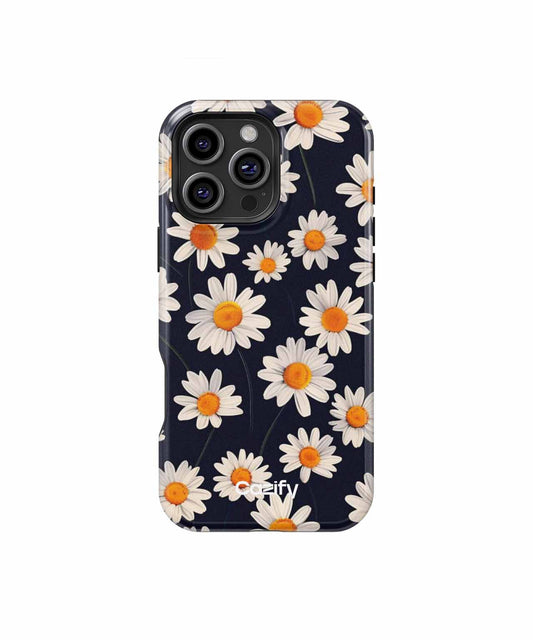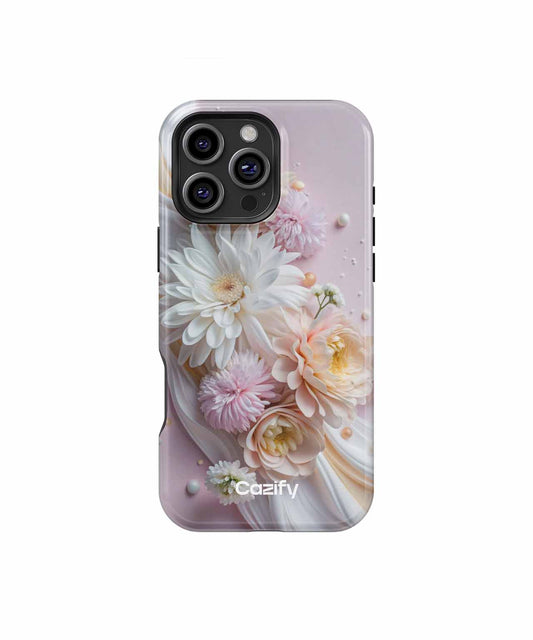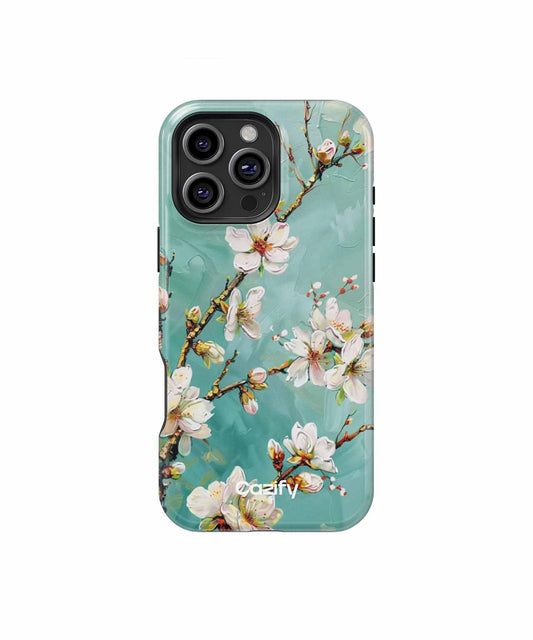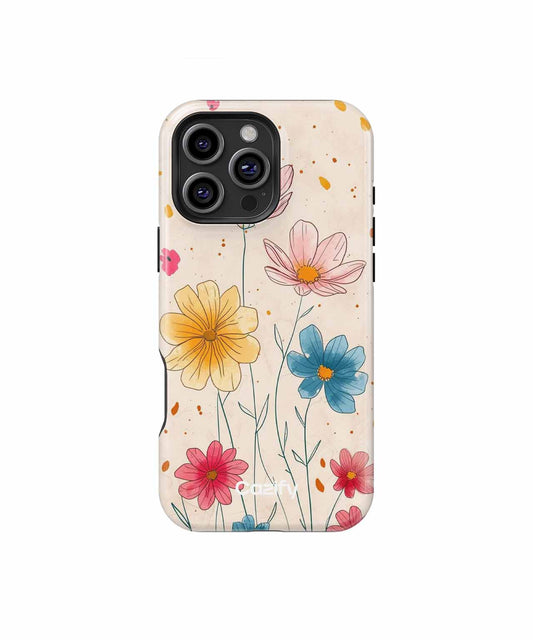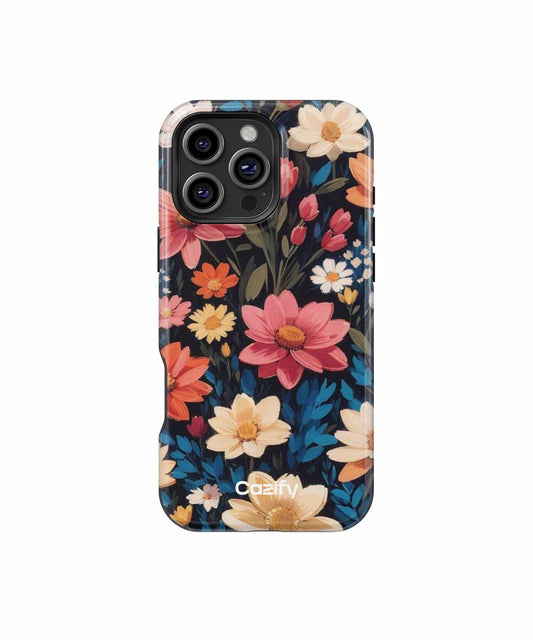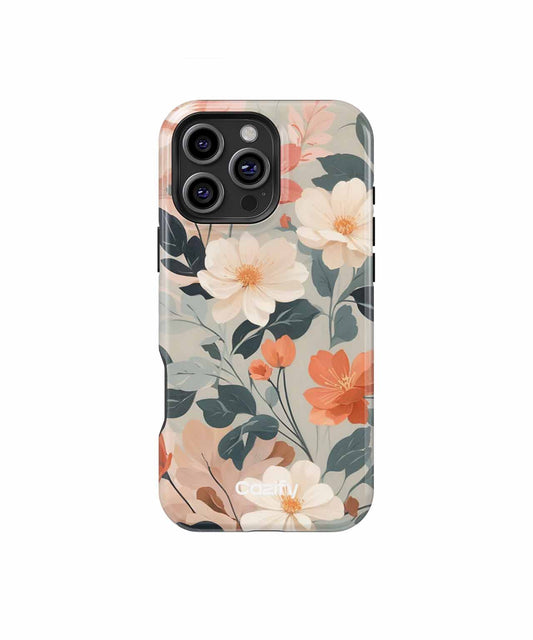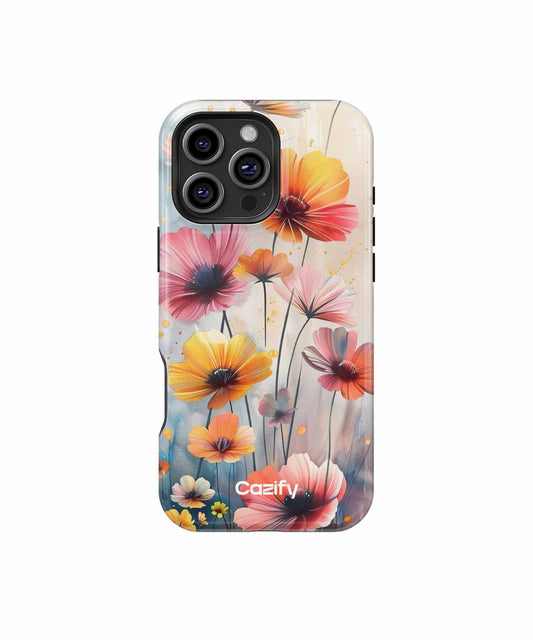
How to Choose the Perfect iPhone Case for Your Lifestyle
Share
Understanding the Importance of an iPhone Case
An iPhone is more than just a communication device; it is a significant investment. With its sleek design, advanced technology, and premium build, protecting it from damage is essential to maintain its functionality and aesthetic appeal. While the device itself is constructed using high-quality materials like aluminum or stainless steel and advanced glass, these materials are not immune to scratches, cracks, or impact damage. An iPhone case provides a crucial layer of protection against such risks.
Daily use often exposes an iPhone to accidental drops, bumps, and other hazards. A proper case helps absorb shock, reducing the chances of broken screens or dented edges. Without this safeguard, even a minor accident can lead to costly repairs or, in some cases, render the device unusable. Cases can also protect against environmental factors such as dust, dirt, and moisture, which can compromise the phone’s internal components. Additionally, many cases are designed to offer extra grip to prevent the device from slipping, further minimizing the risk of accidents.
The importance of an iPhone case extends beyond functionality. It also allows users to express their personal style. Cases are available in a wide variety of materials, colors, patterns, and designs, enabling individuals to customize their device while keeping it safe. For those who rely heavily on their iPhone, such as professionals or adventure enthusiasts, certain cases also offer enhanced features, including waterproofing, reinforced durability, or integrated card slots.
Ultimately, choosing an iPhone case is an essential step toward preserving the device’s longevity and usability while adapting it to suit the user’s specific needs and lifestyle.
Identifying Your Lifestyle Needs and Priorities
Choosing the ideal iPhone case begins with assessing your unique lifestyle and understanding your priorities. Different individuals require different levels of protection, functionality, and style from their phone cases, depending on their daily routines and habits.
Consider the level of protection required based on how often the device may be exposed to potential damage. Someone engaged in outdoor activities such as hiking, biking, or sports may benefit from a rugged case that provides superior shock absorption and enhanced durability. On the other hand, a minimalist user who primarily works in an office may prioritize lightweight, slim cases for ease of handling and aesthetics over heavy-duty protection.
Evaluate if additional functionality is essential to your needs. For productivity-driven individuals, wallet cases or cases with built-in kickstands can help streamline tasks by combining multiple utilities. A traveler, for instance, might appreciate a case with RFID-blocking compartments for cards, while someone frequently relying on video calls or virtual meetings could opt for a case with magnetic compatibility for mounting convenience.
Style and self-expression are also significant factors worth considering. Individuals seeking professional appearances might opt for leather cases with sleek, polished finishes. Meanwhile, those with vibrant personal aesthetics might prefer colorful patterns, clear cases for showcasing the phone’s design, or customizable options.
Lastly, long-term durability and environmental impact might influence certain choices. Users who value sustainability may prioritize cases made from eco-friendly materials or biodegradable options. Reflecting on these elements ensures a case aligns perfectly with not only one’s practical needs but also their values and preferences.
Exploring Different Types of iPhone Cases
When selecting the ideal iPhone case, understanding the various types available can significantly impact the decision-making process. These cases are designed to cater to different needs, preferences, and lifestyles, offering a balance between functionality, protection, and style.
1. Standard Silicone and Plastic Cases
Silicone and plastic cases are among the most popular and widely available options. Lightweight and affordable, they provide basic protection against minor drops and scratches. Silicone cases often have a soft, flexible texture, while hard plastic models offer a more rigid feel. These cases come in a variety of colors and designs, making them ideal for users who value aesthetic appeal and portability.
2. Rugged and Heavy-Duty Cases
Designed primarily for durability, rugged cases provide maximum protection against impact, falls, and extreme conditions. These cases often feature reinforced corners, shock-absorbing layers, and raised edges to safeguard the screen and camera. While bulkier than their standard counterparts, they are best suited for outdoor enthusiasts, construction workers, or anyone frequently exposed to harsh environments.
3. Wallet and Folio Cases
Wallet and folio cases combine the functionality of a phone cover with storage capabilities. These cases typically include slots to hold credit cards, IDs, or cash, eliminating the need for an additional wallet. Made from leather, synthetic materials, or fabric, they provide a sophisticated look while offering screen protection when closed. They are ideal for professionals or minimalists seeking a multi-purpose cover.
4. Clear and Transparent Cases
Clear cases are perfect for those who want to showcase the iPhone’s original design while still protecting it. Made primarily from TPU or polycarbonate plastic, they are slim and lightweight. Clear cases are available in standard or reinforced forms, offering a balance between minimalism and defense against scratches. UV-coated versions resist yellowing over time, maintaining their transparent look.
5. Charging and Battery Cases
Charging cases incorporate built-in batteries to extend the phone’s life, making them a practical choice for users who are always on the go. These cases can charge the iPhone while simultaneously providing protection. Though bulkier than traditional options, they are well-suited for frequent travelers or individuals with demanding daily schedules.
6. Custom and Designer Cases
For users with a strong emphasis on personal style, custom and designer cases are ideal. Crafted with unique materials, patterns, or artwork, they prioritize aesthetics without compromising basic protection. Many retailers and designers offer custom-printing services, allowing users to create truly personalized shells that reflect their personality. These options cater mostly to fashion-focused consumers.
By evaluating these categories, users can identify an iPhone case that fits their individual needs while aligning with their lifestyle.
Evaluating the Level of Protection You Need
Choosing the right iPhone case begins with understanding the level of protection your lifestyle demands. Different activities and environments expose devices to varying degrees of risk, making it essential to assess how much durability and safeguarding will be required. Begin by considering how and where the phone is used most frequently.
For individuals who often find themselves in physically demanding or outdoor environments, opting for a heavy-duty protective case is recommended. Rugged cases are designed to withstand drops, scratches, and even water exposure, making them ideal for adventurers, construction workers, or those prone to accidents. Features such as reinforced corners, shock-absorbing layers, and raised edges provide superior protection against physical damage. Additionally, many rugged cases meet military-grade drop test standards, ensuring durability in harsh conditions.
In contrast, lighter protection may suffice for users whose daily activities involve minimal exposure to hazards. A slim or minimalist iPhone case provides basic defense against scratches and minor drops while maintaining the phone’s original design and ease of use. These cases are popular among professionals and students who primarily work in offices or other controlled environments.
Factors such as screen protectors and waterproofing also play a role in the decision-making process. For those concerned about water exposure, waterproof cases add an extra layer of defense, especially in humid or aquatic settings. Meanwhile, added screen protection is key for those who frequently place their phones in pockets or bags containing sharp objects like keys.
Evaluating usage habits, occupational demands, and environmental risks will guide individuals to a case that balances functionality, protection, and style.
Considering Materials: Durability vs. Aesthetics
When selecting an iPhone case, the choice of materials plays a pivotal role in balancing durability and aesthetics. Cases are available in a variety of materials, each offering its unique set of benefits and limitations. By understanding the distinct characteristics of these materials, iPhone users can make informed decisions that align with their priorities and lifestyle needs.
Durable Material Options
Silicone and TPU (Thermoplastic Polyurethane): These flexible and shock-absorbent materials provide excellent impact resistance, making them ideal for individuals seeking protection from accidental drops. Unlike harder materials, they are less likely to crack and offer a firm grip, reducing the chance of the phone slipping out of one’s hands.
Polycarbonate and Hard Plastic: Recognized for their rigidity, polycarbonate and hard plastic cases offer a robust defense against everyday wear and tear. However, they may be prone to visible scratches over time, which can detract from their appearance.
Metal: Aluminum and other metal cases provide unparalleled durability, making them a strong choice for those who prioritize resilience. However, their heavier weight and potential to block wireless signals can be drawbacks users should consider.
Leather: Leather materials balance durability with sophistication. While they soften over time, creating a timeless look, they may show wear more visibly than synthetic options and require regular care.
Aesthetic Considerations
For users who value visual appeal, certain materials stand out due to their style and finish:
- Transparent TPU or Acrylic: Perfect for showcasing the phone’s design while offering moderate protection.
- Fabric and Wood: These provide a distinctive texture and stylish appearance but often lack the same level of durability as synthetic options.
While choosing materials, individuals must weigh how each aligns with their preference for either practicality or visual flair. The ideal approach often lies in striking the right balance between these competing priorities.
Selecting the Right Design for Your Style
When choosing an iPhone case, design plays a critical role in reflecting the user’s personal style while maintaining functionality. A case’s aesthetics should align with individual preferences, lifestyle, and needs, offering both a visual appeal and practical utility. Finding the right balance can turn a simple protective cover into a statement piece.
For those who prefer minimalism, slim and clear cases with understated designs allow the natural look of the iPhone to shine through while offering subtle protection. Sleek matte finishes or monochromatic tones provide a sophisticated and professional appearance, making them ideal for formal environments or individuals seeking a clean, modern aesthetic.
On the other hand, people with a creative or vibrant personality may lean toward bold patterns, colorful prints, or artistic designs. There are cases featuring nature-inspired motifs, geometric shapes, or even illustrations that can serve as an extension of the user’s creativity. For customization enthusiasts, some cases allow users to add personal photos or words, creating a truly unique accessory.
For a luxurious edge, leather cases, metallic finishes, or premium textures such as carbon fiber exude elegance. These options not only elevate the style quotient but also often age gracefully, making them suitable for longer use. Alternatively, sporty or rugged cases featuring rugged edges, dual-tone finishes, or logo accents cater to active lifestyles without compromising on appearance.
Functionality should not be overlooked. Wallet cases with built-in card slots, kickstand features, or magnetic closures seamlessly combine convenience and style. Meanwhile, color-matching the case with accessories, such as a watchband or AirPods case, can tie together a coordinated fashion statement.
With a wide array of designs available, users are encouraged to explore various styles that align with their aesthetics, ensuring exterior beauty complements their personal expression.
Analyzing Special Features to Enhance Functionality
When selecting an iPhone case, special features often play a pivotal role in ensuring that it aligns with the user’s lifestyle and specific needs. These features can provide more than just protection; they can enhance the phone’s usability and convenience in daily life. Understanding and evaluating these options helps individuals choose a case that offers optimal functionality.
Some iPhone cases come with advanced drop protection technologies, such as air-cushion corners or shock-absorbing materials. These are ideal for individuals who frequently handle their devices in demanding environments where accidental drops are more likely. For outdoor enthusiasts or those in physically intensive professions, the addition of waterproof or weather-resistant seals offers extra durability against harsh conditions.
Certain cases integrate stands or kickstands, making them highly functional for professionals who rely on their phones for video calls or presentations. Likewise, users who consume media on their devices might find value in this feature for hands-free viewing. Foldable wallet cases provide another layer of utility by combining phone protection with a built-in holder for cards and IDs, making them well-suited for minimalists who prefer carrying fewer items.
Wireless charging compatibility is another factor frequently analyzed. While most modern cases support this feature, some thicker or rugged varieties might inhibit a seamless wireless charging experience. Magnetic attachments, often found in MagSafe-compatible cases, enhance functionality for users who pair their iPhones with automobile mounts, magnetic wallets, or charging docks.
Customizable elements, such as interchangeable panels, straps, or decorative components, also appeal to those seeking personalization alongside practicality. For those prioritizing privacy, many cases feature sliding covers to block the phone’s camera when not in use.
By assessing which special features match the user’s needs, it becomes easier to select an iPhone case that not only safeguards the device but also amplifies its usability across varied scenarios.
Compatibility with Accessories and Wireless Charging
When selecting an iPhone case, ensuring compatibility with accessories and wireless charging is key to preserving the versatility of the device. Various cases, particularly bulkier or uniquely designed ones, may interfere with everyday accessories such as charging cables, docks, or camera lens attachments. It is essential to confirm that the case’s design allows unobstructed access to ports, buttons, and connectors. Manufacturers typically specify accessory compatibility, making it easier to choose accordingly.
Wireless charging compatibility is another critical factor, especially for users relying on Qi-certified chargers or MagSafe technology. Some cases, particularly those made with thick materials like metal or dense plastic, can hinder the phone’s ability to charge wirelessly. Cases labeled as “wireless charging compatible” or “MagSafe-ready” are generally optimized to ensure seamless charging without removing the case. For MagSafe users, specific cases with built-in magnetic rings provide secure alignment and stronger attachment to accessories.
Additionally, compatibility with Apple’s ecosystem-specific accessories, such as the MagSafe Wallet or MagSafe Battery Pack, requires careful attention. A case designed without MagSafe support may prevent these add-ons from securely attaching. Users heavily reliant on car mounts or stands may also need cases with integrated magnetic backing or slots for such purposes.
With the increasing focus on sustainability, some eco-friendly cases are crafted from biodegradable materials but lack compatibility with advanced technologies like MagSafe. It is advised to compare features and ensure the case supports the functionalities deemed essential for daily use. Proper research simplifies the process of balancing protection with functionality.
Budget-Friendly vs. Premium Options: What to Choose
When selecting an iPhone case, understanding the distinctions between budget-friendly and premium options is essential for making an informed decision. Each category carries distinct characteristics that address different priorities, such as protection, aesthetics, and additional features.
Budget-Friendly Cases
Budget-friendly cases are often focused on affordability, making them a popular choice for individuals who prioritize cost-effectiveness. Typically made from materials like TPU (thermoplastic polyurethane) or basic plastics, these cases offer lightweight protection against scratches and minor falls. Many of these options provide a wide variety of designs, patterns, and colors, appealing to users seeking to personalize their devices without spending excessively. However, budget cases may lack advanced protective features like shock absorption or reinforced drop protection, making them less suitable for users prone to accidents or who frequently expose their phones to rugged environments.
Additionally, these cases are typically thinner, which makes them convenient for users looking for minimal bulk. One trade-off, however, is the potential for faster wear and tear or discoloration over time, reducing their overall durability.
Premium Cases
Premium options, on the other hand, cater to those who prioritize build quality, advanced features, and brand reputation. Often made of high-grade materials such as leather, silicone, or multi-layered hybrid polymers, these cases deliver enhanced durability and elevated aesthetics. Many premium cases include features like military-grade drop protection, built-in kickstands, MagSafe compatibility, or even antimicrobial coatings, allowing for added functionality and peace of mind.
These cases often reflect refined craftsmanship and attention to detail, making them ideal for professionals or users who view their iPhone as an essential extension of their lifestyle. However, the higher cost may deter budget-conscious consumers, as premium offerings can sometimes cost as much as or more than entry-level phones themselves.
Ultimately, the choice between budget-friendly and premium cases depends heavily on the user’s lifestyle, priorities, and willingness to invest in quality. Balancing cost and desired features should guide the decision.
Assessing Eco-Friendly and Sustainable Case Alternatives
Choosing an iPhone case that aligns with environmental values requires careful evaluation of eco-friendly and sustainable options. These cases are crafted to minimize environmental impact without compromising durability or aesthetic appeal. Material selection is a key factor when assessing sustainability. Cases made from biodegradable materials such as plant-based plastics, bamboo, or cork offer an alternative to conventional plastic and are designed to degrade naturally over time.
Reclaimed or recycled materials also represent a sustainable choice. Cases made from post-consumer plastics, repurposed wood, or recycled silicone repurpose existing resources, reducing the strain on raw material extraction. Some manufacturers even emphasize zero-waste production processes, ensuring that waste is minimized during manufacturing.
Certifications can help identify genuinely sustainable products. Labels such as FSC (Forest Stewardship Council) for wood-based cases or ISO 14001 for environmentally managed production systems provide assurance of ethical production methods. Checking for such certifications ensures the case aligns with recognized sustainability standards.
Durability and lifecycle are equally important. Eco-friendly cases should provide long-lasting protection to reduce the frequency of replacement. A case designed to withstand wear and tear extends its usability and minimizes waste. Additionally, repairability, such as replaceable components or modular designs, can contribute to longevity.
Consumers should also evaluate the packaging used for these cases. Minimalist, plastic-free packaging options that use recycled or compostable materials further reduce an item’s overall ecological footprint. Lastly, many sustainable brands offer take-back or recycling programs, ensuring old cases are responsibly disposed of or reused.
By examining materials, certifications, lifecycle, and packaging, one can make an informed decision that harmonizes personal device protection with environmental responsibility.
Where to Shop: Online vs. In-Store Options
When choosing the ideal iPhone case, weighing the benefits and limitations of online and in-store shopping is essential. Both options offer unique advantages, and the decision largely depends on an individual’s preferences and priorities.
Shopping Online
Online stores provide unparalleled convenience and an extensive selection of iPhone cases. Popular e-commerce platforms like Amazon, Apple’s official store, and niche case manufacturers’ websites allow users to explore countless designs, materials, and features without leaving home. Many online retailers offer customizable options, enabling customers to add personal touches like engravings or specific colors. Competitive pricing is another benefit, as online shoppers can quickly compare costs across multiple sites and benefit from discounts, flash sales, and bundled deals.
However, there are some drawbacks to online shopping. The inability to physically examine or test cases can be a significant limitation. Images and descriptions may not always accurately represent the product’s durability, fit, or texture. Additionally, waiting for shipping and addressing potential issues like returns or exchanges may be less convenient for those seeking immediate solutions.
Shopping In-Store
In-store shopping provides a tactile experience that many customers find invaluable. Brick-and-mortar retailers, such as Apple Stores, electronics outlets, or specialized accessory shops, allow individuals to hold, feel, and inspect cases before purchasing. This firsthand evaluation helps ensure proper fit, material quality, and overall satisfaction. In-person assistance from knowledgeable staff can also guide shoppers toward options that align with specific needs, such as superior drop protection or stylish aesthetics.
Nevertheless, in-store shopping may offer a more limited selection compared to online platforms. Physical stores often carry inventory tailored to local demand, which could restrict access to less common styles or brands. Pricing in stores may also be less competitive due to operational and overhead costs.
Ultimately, careful consideration of these factors can help narrow down the best approach for finding the perfect iPhone case.
Tips for Maintaining and Cleaning Your iPhone Case
Proper maintenance and cleaning of an iPhone case are essential to preserve its appearance, functionality, and durability. Regular attention prevents dirt buildup and minimizes wear and tear over time.
Regular Cleaning Routine
Remove the Case from the iPhone Always take the case off before cleaning to prevent moisture from damaging the phone itself. This allows access to all areas of the case while protecting the device.
Use the Right Cleaning Materials Opt for a soft microfiber cloth or a lint-free sponge to avoid surface scratches. For stubborn grime, use mild soapy water or a small amount of rubbing alcohol. Harsh chemicals, such as bleach or acetone, should be avoided as they may discolor or degrade the case.
Wash Thoroughly Yet Gently Gently scrub the case using circular motions to loosen dirt or stains. For textured or patterned cases, a soft-bristled toothbrush can help reach crevices without causing damage. Rinse thoroughly with lukewarm water to remove cleaning agents.
Dry Correctly After rinsing, use a clean towel to pat the case dry, then let it air-dry completely before putting it back on the iPhone. Placing a damp case back on the device can trap moisture and lead to issues like discoloration or corrosion.
Specific Material Care Tips
- Silicone and Rubber Cases: Avoid prolonged exposure to direct sunlight as it can cause fading or deformation.
- Leather Cases: Use leather-safe cleaning products and be mindful of water exposure to prevent cracking.
- Clear Cases: To combat yellowing, clean frequently and avoid prolonged contact with dark dyes or fabric.
Preventative Measures
- Handle with Clean Hands: Oils and grime from hands can quickly stain or degrade the case.
- Avoid Sharp Objects: Keep the case away from keys or rough surfaces to prevent scratches.
- Switch Cases Periodically: Rotating between cases reduces overall wear and keeps each one in better condition.
By following these tips, users can extend the life of their iPhone case while keeping it looking and functioning like new.
Final Thoughts: Balancing Form, Function, and Personalization
Selecting the perfect iPhone case requires careful consideration of several factors to strike an ideal balance between aesthetics, practicality, and individuality. While durability and protection are often top priorities, one cannot ignore the importance of a case that aligns with personal style. A thoughtfully chosen case can not only safeguard your device from physical damage but also serve as an extension of your personality.
From a functional standpoint, materials play a pivotal role. Cases made of silicone or thermoplastic polyurethane (TPU) often provide excellent shock absorption, whereas hard plastic cases tend to offer scratch resistance with a slim profile. For those seeking a touch of luxury, leather cases add an element of sophistication but might be less effective at managing impacts. It’s important to evaluate the case’s material based on your lifestyle, such as whether you frequently drop your phone or use it in rugged environments.
A case’s design should complement everyday usage. Opting for slim-fit cases ensures portability for minimalists, whereas folio or wallet cases add utility by combining card-holder functionality. Features like raised bezels for screen protection, precise cutouts for ports, and compatibility with wireless charging are also highly significant when determining usability. Individuals who prioritize convenience should ensure the case aligns seamlessly with accessories like screen protectors or camera lenses.
Personalization enhances the overall ownership experience. Customizable options like monograms, engraved designs, or bold patterns allow users to make a unique statement. For eco-conscious consumers, cases made from biodegradable or sustainable materials introduce an opportunity for an environmentally responsible choice.
Balancing form, function, and personalization makes the decision more fulfilling. By carefully considering these aspects, users can find a case that not only protects their device but also enhances its practicality and showcases their distinct style.

